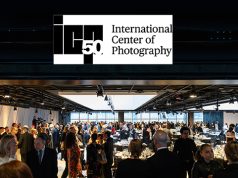
Not too long ago, a friend who is a longtime salesperson for minilab equipment needed to get some prints made from images of his newborn grandson that were taken on his iPhone. So he called a few retail locations near his home to see whether he could e-mail the images and come down to pick up the prints. He was told no, he needed to actually come into the shop for this task.
At the first retailer, the store associate had to find a cable to connect the iPhone before he could try to download the images, and then the system would not load them because there were too many of them. While this was happening, my friend had to continuously ask questions to make everything happen. At a different store, recently installed software was unable to recognize the image format, and my friend sadly concluded that a typical consumer would never have made it as far as getting prints.
What can we deduce from this anecdote? We know that the number of images being captured on cameraphones/smartphones is increasing far more rapidly than those being taken on digital still cameras (DSC). In fact, we estimated that in 2011 the number of images saved (not taken) worldwide by DSCs reached 147 billion, while those taken and saved with cameraphones reached 76 billion. We project that by 2015 the number of images saved from DSCs will grow to 156 billion, and those saved from cameraphones will reach 143 billion. Obviously, a key for those operating minilabs, and kiosks, is to be able to print from cameraphone images.
Ron Kubara, who serves as an international proselytizer for Noritsu (noritsu.com), presented exciting programs at two conferences we organized during 2011 that unquestioningly demonstrated the ability of today’s minilabs, with the appropriate software applications, to make outstanding enlargements from relatively low-resolution cameraphone images. Still, the worldwide minilab market has been affected by a combination of lack of marketing skills by operators, an unawareness by consumers of the printing capabilities for a wide range of personalized photo products, floundering economies and a difficult year of natural disasters as well as civil wars. The impact on sales is shown in Figure 1.
Although there have been no sales of double-sided silver halide minilabs in North America due to the unavailability of the necessary photographic paper in this region, sales have been quite strong in China, Africa and Southeast Asia. Besides four Chinese manufacturers currently manufacturing these systems, led by Prismlab (prismlab.com) which pioneered this technology, one European minilab company has started selling its own version and another may also join the competition. These minilabs are getting faster and outperform comparable inkjet minilabs.
Similarly, the latest Fujifilm (fujifilmusa.com) silver halide minilab model, despite its relatively high price, has garnered numerous sales around the world because it has a productivity that is unmatched by inkjet minilabs.
To ameliorate the price differential between silver halide and inkjet minilabs, KIS (kis.fr) introduced its latest generation of DKS4 minilabs, the DKS18 series, in mid-2011. The compact minilab, which carries a price comparable to dry minilabs, will produce prints from 3.5×5 inches up to 12×36 inches. During 2011, KIS also introduced its Photobook Builder, which automatically scores, folds, glues, binds and trims silver halide prints to make greeting cards and photo books. Besides selling this under the KIS brand, it is being sold in different parts of the world by Fujifilm, Mitsubishi Imaging and Noritsu.
The latest generation of inkjet minilabs has also proved to be more popular than the previous generation, although this is not reflected in the sales shown in Figure 1. The breakout of “new” and “reconditioned” minilabs illustrates another trend: for high productivity minilabs, the price differential between new and reconditioned units is sufficiently large so that many operators will buy the rebuilt units today, especially when they have the latest CPU and software installed. However, for those units with outputs less than 1,000 4×6-inch prints/hr., the difference between a rebuilt silver halide model and a new inkjet model is small enough that operators opt for the new one, especially with the warranty, training, etc., that goes with it.
One of the drawbacks to a “minilab shop” has been the space required to set it up, and prime mall locations are expensive. However, at the Photo Imaging Brazil show in mid-2011 we had an opportunity to see an exciting innovative system. At the Noritsu booth (noritsu.com.br) we saw a very interesting complete “mall shop” that can be put into the corridors of malls without the need for renting a store. Noritsu worked with a key customer, Qualifoto (qualifoto.com.br), to design this system.
Designated the ilab, the system is self-contained with a D502 dry minilab, a Fotolusio dye-sub printer for “instant” 10×15/15x21cm prints, three CT-RS kiosks, a photo area, a VersaStudio sign machine, a Metaza MPX-90 for printing on metal, a photo book system and a T-shirt press. There are three configurations: 8 sqm, 10 sqm and 12 sqm. All around the outside of this “booth” are display shelves for sample products.
Outside of the U.S., the major companies do a lot of concept development. This past October, Kodak formally opened its new Kodak Image Club flagship store in Beijing. This “production” concept store has been under development for two years, and a Kodak New Concept store opened in mid-2009 as a test location. As the roughly 5,000 Kodak Express (KEX) stores in China struggle with the defection of “printing” customers, the company has been working to produce a business model that will allow those progressive KEX owners to move away from their heavy dependence on printing. In the words of Photo Imaging News’ China-based reporters, the new store highlights “shared experiences and pleasures of use, and is designed around elements such as life, visual, fashion, young and DIY. While meeting consumer demand for sleek and personalized images, it also has well-known furniture brands placed in the open spaces of the store as a way of cross-company cooperation.”
This latest store offers a resource platform encompassing photographers, designers and a commercial image library, in which Kodak has organized hundreds of outstanding Chinese portrait photographers to provide photographic support services for Kodak Express stores, and has lured in nearly 500,000 designers who can offer creative products and design support services to consumers. Integrating these pre- and post-photography resources is clearly a move for Kodak to get itself ready to entice young consumers to do something with their ever-increasing number of images.
Unfortunately, in the U.S. we frequently fail to look elsewhere in the world for ideas about how to enhance the photo services retailing experience of consumers. Today’s minilabs models are still being improved to provide even better personalized photo products, but the key to the future of the photofinishing business lies not in the equipment but in its application and customer service.





